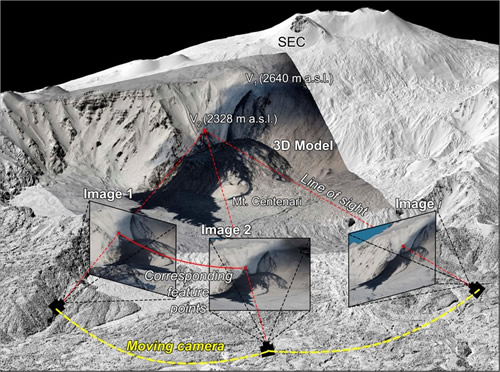The 2004–2005 Mt. Etna Compound Lava Flow Field: A Retrospective Analysis by Combining Remote and Field Methods

Fornaciai A., D. Andronico, M. Favalli, L. Spampinato, S. Branca, L. Lodato, A. Bonforte, L. Nannipieri (2021).
Journal of Geophysical Research: Solid Hearth, https://doi.org/10.1029/2020JB020499
Abstract
Mapping lava flows frequently during effusive eruptions provides crucial parameters to better understand their dynamics, in turn improving our ability to model lava flow behavior. New photogrammetric methods have recently been developed, shifting the paradigm of photogrammetry from pure method to a multidisciplinary approach able to reduce the cost of volcanic monitoring and widen the potential spectrum of application. In this work, we demonstrate how multi‐view and single‐view photogrammetry methods can be used effectively to extract accurate quantitative information from photographs taken during routine surveys over an active lava flow. One intriguing advantage of these methods is that they can re‐use images acquired previously to extract new data from past eruptions. In particular, we reconstructed quantitatively the evolution of the lava flow field emplaced during 2004–2005 at Mt. Etna, subdivided in five eruptive phases from the earliest simple lava flows to the final compound lava field about 6 months later. Our results show that, in the first week of eruption, lava field formation was characterized by an increasing lava length that followed a power law growth and by a decreasing front velocity that followed a power law as well. Thereafter, the length increasing became almost constant until the developed lava tube system was able to drain the lava for long distances, with the area inundated by lava that grew linearly in the first 20 days. Finally, we demonstrate the crucial role that the syn‐eruptive DEMs acquisition could have to improve our understanding of the emplacement dynamics of complex lava fields.


Devi effettuare l'accesso per postare un commento.